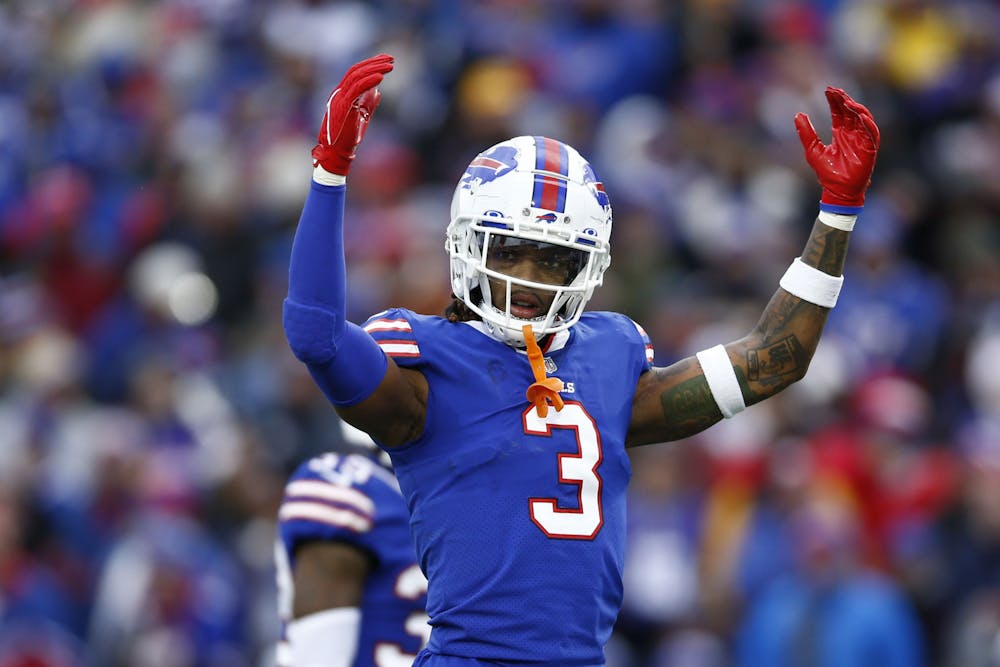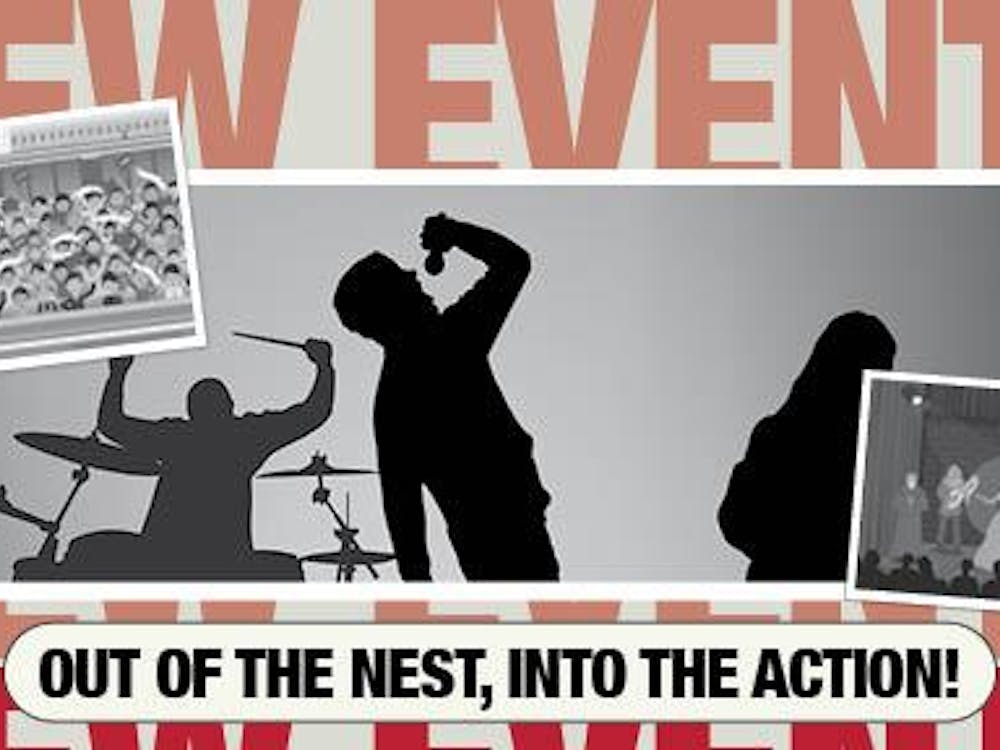Corbin Hubert is a second-year journalism major and Caleb Zuver is a third-year Journalism major. They both write for the Daily New. Their views do not necessarily reflect those of the paper.
Hubert: Forgotten too soon
To any NFL fans out there who have children, let me ask you a question.
If your child, your baby, had fulfilled their dream of reaching the NFL and was playing for one of the best football teams in America one day then the next day was in the hospital in critical condition with the inability to manually breathe, how would you feel?
You would most likely be crushed, defeated and hopeless.
Now imagine how Nina Hamlin felt when she saw her son, Damar Hamlin, in that exact scenario.
January 2, 2023, will be a haunting day for Nina for the rest of her life because it is the day her son, a safety for the Buffalo Bills, collapsed on the field after a tackle on Cincinnati Bengals wide receiver Tee Higgins.
In the immediate aftermath of the incident, the crown of Higgins’ helmet collided with Damar’s chest, causing Damar to suffer a cardiac arrest. People around the world united over social media to express their sorrow and support for Damar’s family.
While this support should continue until Damar makes a full recovery, sadly, I do not think it will.
The 24-hour news cycle is a term that has been around for over 20 years and the tragedy that occurred at Paycor Stadium Monday night will likely fall victim to that.
See, the 24-hour news cycle relates to a practice done by news organizations where updates regarding a story are given as they come in, in order for stations and outlets to compete for viewership. An example of this is the OJ Simpson trial, in which news stations delivered fast-paced updates on the status of the trial.
Ever since then, people have been conditioned to pay attention to a story until they get every detail they need and then they forget all about it and move on to the next story and move on with their lives.
I fear this will be the case for Damar’s story. Once people have gotten all the updates they need or once updates are no longer being shared, the media will move on to the next hot story.
Case in point, late Monday night, the top item on the ESPN app was a story about Damar with updates on his condition. Tuesday evening the top item on the ESPN app was the day’s college basketball scores.
I am not saying that every second of every day should be devoted to coverage of Damar, there are other stories out there, but I think it is incredibly insensitive considering firstly, Damar’s family is unable to just move on and secondly, these same outlets will go and air NFL highlights this weekend as though nothing has happened, passing over someone’s condition in favor of clicks and views.
While the media may forget about Damar, the fans certainly have not. Since the events Monday night, Damar’s personal toy drive fundraiser has surpassed $5 million in donations from fans and members of the football community. Fans of the Bengals waited outside of the University of Cincinnati hospital, showing their support for Hamlin.
If the fans do not forget, why do we allow the media to show neglect on what matters?
Contact Corbin Hubert with comments at cchubert@bsu.edu or on Twitter @corbin_hubert_.
Zuver: This one is different
But this is becoming increasingly harder to ignore week after week.
If you ask anyone that plays football, most of them will tell you that injuries are an accepted consequence of playing the sport. And not just injuries like a rolled ankle. It’s injuries like a torn achilles, torn ACL or even concussions, all serious injuries, that players know are possible, and are willing to risk at the expense of pursuing their dreams.
It’s accepted as the nature of the game, and it’s understood amongst the brotherhood of the NFL that these serious injuries could set them back.
Some of the worst extremes of these accepted injuries amongst players have reared their ugly heads in Cincinnati, just as they did on Monday night.
In 2017, Pittsburgh Steelers linebacker Ryan Shazier sustained a spinal contusion during a Monday night game in Cincinnati after trying to make a tackle. It limited his movements in his lower extremities.
Losing the ability to control your own body movements can probably be added to that list of risks football players understand when they start playing the game. But it’s often thought of as the worst-case scenario, and so rare that it’s not even something worth thinking about as a concern.
After Shazier was carted off, the game continued. The Steelers won 23-20
Just earlier this season, Miami Dolphins Quarterback Tua Tagovailoa sustained a concussion after being sacked. His head snapped back and hit the ground, and he was left motionless on his back with his fingers clasped in the air.
This was an example of the concussion risk and sparked questions about player safety
I remember watching that game and wondering how they were going to continue the game after seeing a prominent player like him down on the field, helpless.
But they finished the game. A 27-15 win for the Bengals.
And then Monday. It felt different than all the other ones.
We’ve seen Bills Quarterback Josh Allen's and Bengals Quarterback Joe Burrow’s faces on TV commercials and social media through the years. But we’ve never seen their faces look the way they did on Monday night. Bills Wide Receiver Stefon Diggs was moved to tears.
The reactions of the players huddled around Hamlin down on the field jumped through your television screen, and made you feel some type of way about it, didn’t it?
We don’t get to see these players' emotional reactions to things that happen on the field because they’re often hidden behind a helmet and facemask. But you gotta see it on Monday night.
And it made it feel different.
Maybe there was such a shock because it was such a routine play. It was just a crossing route over the middle, and Hamlin was just trying to make a normal tackle.
Or maybe it was the fact that Hamlin stood up off the ground after the play, and then immediately collapsed back down.
Could it be that watching him receive CPR on the field right in front of them was too much to handle?
How about all three of these factors, and many others, leading to the realization that this could be any of them at any moment while playing the game of football?
Which in turn, led to the game being postponed.
I don’t know how many players, coaches, fans, executives and people in general truly believed that someone dying on the football field was possible. But this situation puts it all in perspective that it absolutely could happen.
How players, not just in Buffalo or Cincinnati, but in the entire league, move on from this moment and continue to compartmentalize to keep playing the game they love will blow me away.
It’s what they’ve always done, but it seems harder now than it ever has.
But when we sit down for week 18 of the NFL season this weekend and watch all these teams try to grab a playoff spot in the last week, will we remember what we watched and how we felt? Or will it be just another incident in the violent game that is football that comes and goes?
Something tells me this one is different.
Contact Caleb Zuver with comments at cmzuver@bsu.edu or on Twitter @zuves35.





